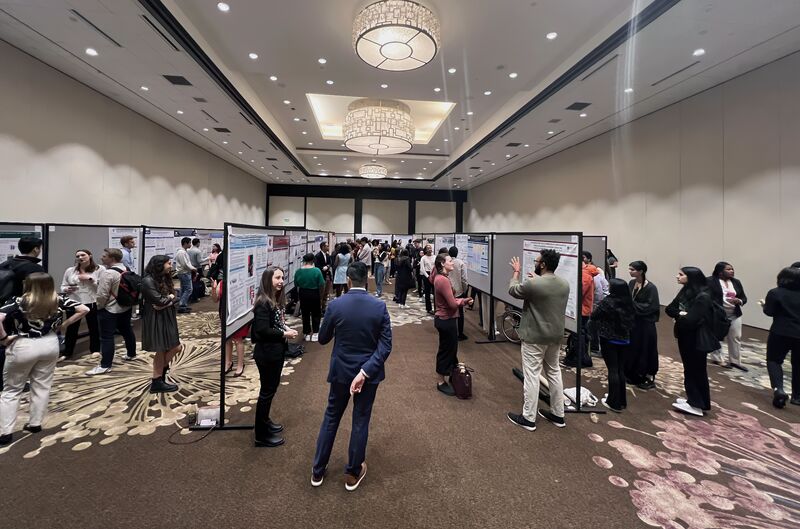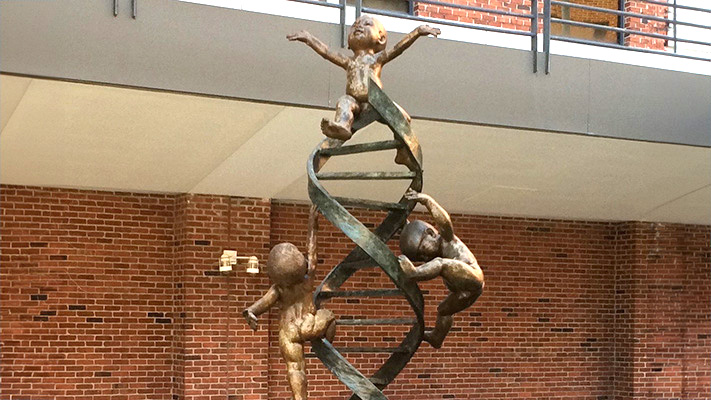Annual meeting supports NHGRI trainees in their research and careers
As always, April was a busy and exciting month for NHGRI and the genomics community. On April 25 and 26, the institute hosted multiple activities for National DNA Day, including the annual Louise M. Slaughter National DNA Day Lecture, which was given this year by Joe Palca, Ph.D., a science communicator and former NPR correspondent. A video of the lecture is available on our YouTube channel, GenomeTV.
Coming up this month is the 102nd meeting of the National Advisory Council for Human Genome Research, which will occur on May 20–21. I invite you to attend the open session of this council meeting on May 20, and further details about the agenda and ways to watch the open session will be available on our website.
Finally, I want to bring your attention to an upcoming NIH virtual workshop entitled Population Descriptors for Legacy Genomic Data: Challenges and Future Directions, which will be held on May 28–29. The workshop, hosted by several NIH institutes, centers, and offices, will explore the recommendations from the 2023 National Academies of Sciences, Engineering, and Medicine report on population descriptors in genomics research. The event will be held over Zoom, and registration is required.
All the best,
![]()
Genomics Research Spotlight
The variation and evolution of complete human centromeres
Logsdon, et al.
Nature, 2024 Apr, PMID: 38570684
Centromeres, the regions that help chromosomes separate during cell division, play important roles in cell biology and the development of certain diseases, like cancer. Centromeres have long been challenging to characterize due to the highly repetitive nature of their DNA sequence. However, recent advances in DNA sequencing technologies and analysis methods have greatly advanced the abilities of scientists to study these repetitive regions. Previously, only once before had the centromeres of all chromosomes from a human genome been sequenced, a product of the Telomere-to-Telomere Consortium, published in 2022. This new study provides a complete set of centromere sequences from a second human genome. Comparing between the two sets of centromere sequences, the researchers found notable variation in the number of certain types of DNA repeats. The researchers also sequenced the centromeres of several chromosomes from three non-human primate species, chimpanzee, orangutan, and macaque. These additional centromere sequences revealed interesting interspecies variation. For example, the chimpanzee centromere sequences have significantly fewer repeats than the human centromere sequences. Additionally, the orangutan centromere sequences have an unusual structure compared to those of the other species. While the centromeres of humans, chimpanzees, and macaques are primarily composed of one specific repeating DNA sequence, the orangutan centromeres have three to four distinct repeating DNA sequences, creating a “mosaic” pattern. Understanding the structures and sequences of human and other primate centromeres can help reveal how these important chromosome elements evolved.
This research was funded in part by the NHGRI Intramural Research Program and was performed in the laboratory of Adam Phillippy, Ph.D. This research was also funded in part by the NIH with a grant to Evan Eichler, Ph.D., who is a professor at the University of Washington in the Department of Genome Sciences; that grant is part of the NIH Research Project Grant (PA-20-185).
About The Genomics Landscape
A monthly update from the NHGRI Director on activities and accomplishments from the institute and the field of genomics.
Last updated: May 2, 2024



